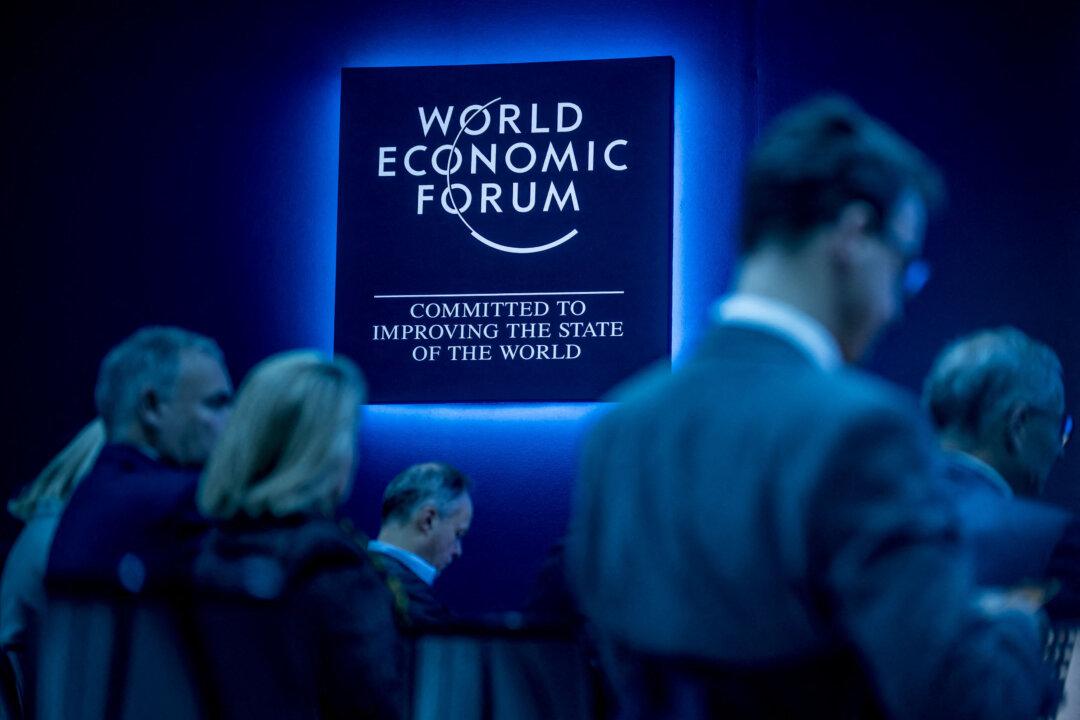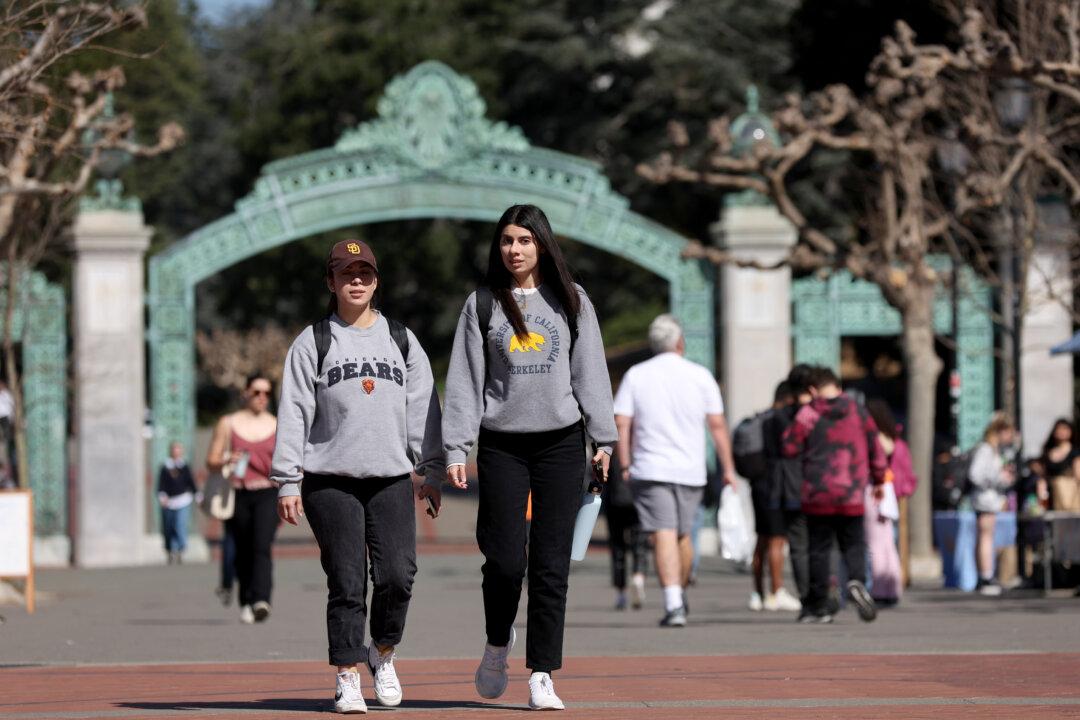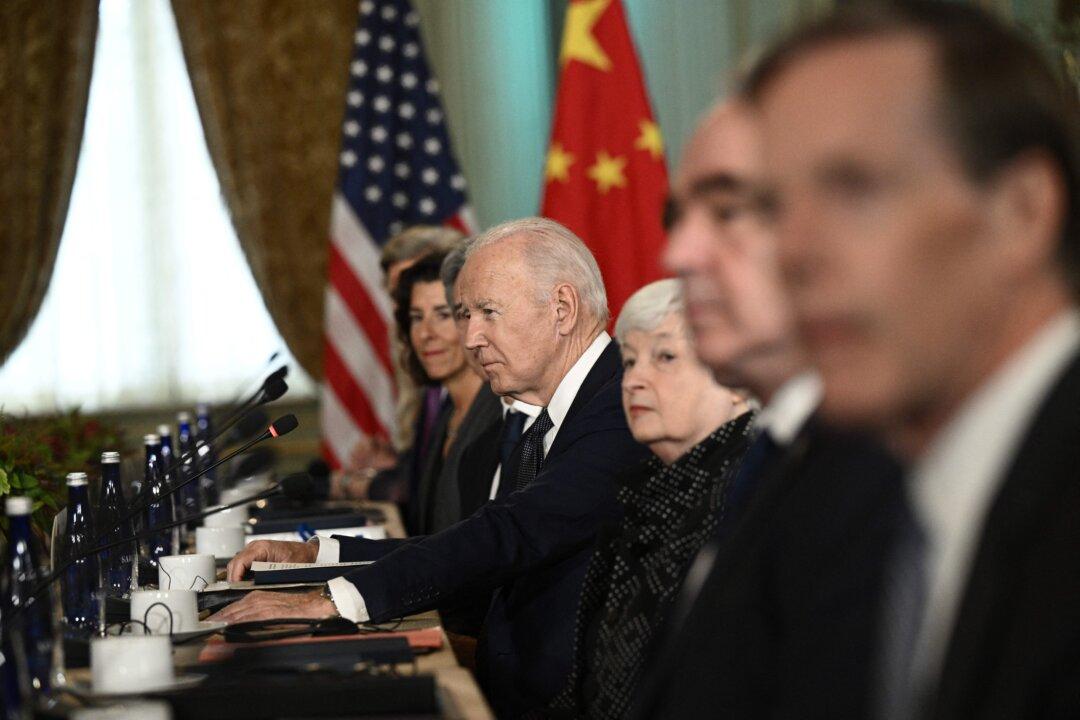The Communist giant is about to be the odd man out as the three countries of the North American continent reinvent the largest and richest free trade zone in the world. The U.S.–Mexico–Canada trade pact will encompass a population of nearly 500 million people and boast a combined GDP of almost 24 trillion dollars.
Whether or not the Phase 1 U.S.–China trade deal materializes—remember that China has walked away from a deal at the last minute before—the signing of USMCA into law will put the United States in a much stronger position in the ongoing trade war. And the Chinese regime only has itself to blame.
Like almost everyone else, China’s leaders completely underestimated President Trump’s staying power, and his determination to stand up for American industry and American workers.
Chinese leader Xi Jinping probably thought his country could go on cheating as usual after the last election, with at most an occasional public scolding from Washington, along with a symbolic gesture or two on trade.
And why wouldn’t he think this? Obama once called him out in the Rose Garden for China’s cybertheft of intellectual property, but after this verbal pat on the wrist, no real consequences followed.
Xi wouldn’t have been worried about tariffs either. Obama did almost nothing in eight years to counteract Chinese dumping except file fruitless complaints with the hopelessly compromised World Trade Organization. He did once slap an import duty on a couple of Chinese products—tires and steel—which did nothing to stop the wider American economy from being steamrolled by China Inc. Symbolism, anyone?
Then along came Donald Trump.
The Chinese regime’s first impulse is almost always to offer a bribe—the Chinese Communist Party (CCP) is fueled by corruption—and that’s exactly what its emissaries tried immediately after the election. Even before the new president was sworn in, they were offering sweetheart deals to members of his family. And why wouldn’t they? It had worked before, with no fewer than three famous American political families. (I’ll let you guess which ones.)
This time, however, they were turned down.
The CCP saw another opening when “Little Rocket Man” began stirring up trouble on the Korean Peninsula. They rushed in with an offer to mediate, obviously hoping to win favor—or at least buy time—with the new president on trade.
This had worked before, too. In fact, it had worked twice with former U.S. presidents, first with Bill Clinton and later with George W. Bush. But it wasn’t long before Trump cut out the middlemen from the Middle Kingdom and met directly with Kim Jong Un in Singapore. And the missiles stopped flying—at least for now.
Even so, Communist Party officials figured they still had the upper hand. They had learned over the past quarter-century how easy it was to manipulate the American political system to their advantage. They were sure that the current occupant of the White House, like his predecessors, would soon buckle under the combined weight of Wall Street, “K” Street, and endless editorials about the economic fantasy known as “free trade.” Trump’s campaign promises of massive tariffs against Chinese-made goods would never materialize—or so they thought.
Trump went ahead with the first round of levies anyway, promising more to come unless the CCP changed its cheating ways.
Instead of backing down, the CCP decided to up the ante and directly meddle in the 2018 midterm elections. Anti-Trump propaganda began pouring out of China’s state-controlled radio and television stations in the United States. Paid advertising inserts attacking his trade policy began appearing in U.S. newspapers.
But the real meddling came in the form of Beijing’s tariffs.
While our initial round of tariffs on China was punitive—imposed as punishment on specific companies guilty of ripping off U.S. technology—China’s were overtly political—targeting the economies of Trump-supporting states like Iowa in the hope of swaying American voters to vote against the president and his policies.
Compared to Russia’s penny-ante election interference in 2016, what the CCP attempted in 2018 was big league meddling. But it was all for naught anyway. Support for getting tough with China among the president’s supporters—and among Americans in general—did not waver.
The CCP’s behavior since then is a case study in negotiating in bad faith. U.S. Trade Representative Robert Lighthizer spent months fine-tuning a 150-page deal with his Chinese counterparts only to have them tear it up in May of this year. After stonewalling for months, Beijing came back to the table in October as a tariff deadline neared. To forestall additional tariffs, Chinese Vice Premier Li even promised Trump that China would buy 50 billion dollars in soybeans, only to walk back on that commitment a few weeks later.
After three years of offering bribes and uttering threats, interfering in American elections and hiding behind North Korea, the CCP seems to have finally reached the bottom of its bag of tricks. And, with impeachment revealed as a sham and the USMCA sure to pass, it decided that an interim deal was better than no deal at all. A “Woke” Beijing now realizes that the Trump presidency is not fatally weakened, as it had thought, and that President Trump may well win a second term.
The passage of the USMCA in the House by an overwhelmingly vote changes everything. First of all, it shows Xi and his advisors that, however divided America’s political parties are on other issues, they can still work together when the country’s vital interests are at stake. Second, it greatly strengthens Trump’s hand in the ongoing negotiations. Not only is it a personal victory for the president—it makes good on one of his signature campaign promises—it also further strengthens a U.S. economy that is already the envy of the world.
At the same time, the USMCA weakens China. By increasing the domestic parts content of cars made in North America, it cuts Chinese parts manufacturers out of this lucrative market. Even more important, the deal contains a “kill switch” that blocks China from entering into any free trade agreement with Canada or Mexico, so that it can’t gain access to the American market “through the back door.”
Beijing’s propaganda machine has angrily denounced these provisions as the work of “anti-China forces.” To which we should say, “Sorry, China, but America comes first.”
The largest free trade deal in the history of the world will soon be in place, and the CCP is on the outside looking in. And, unless it fundamentally changes the way it does business, as it has been promising to do for decades now, it will stay there.





